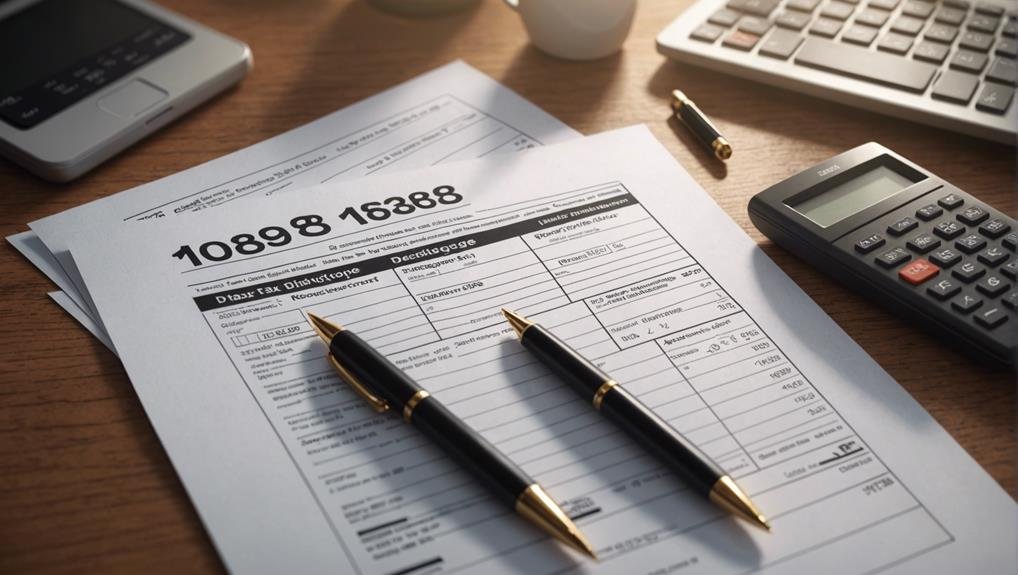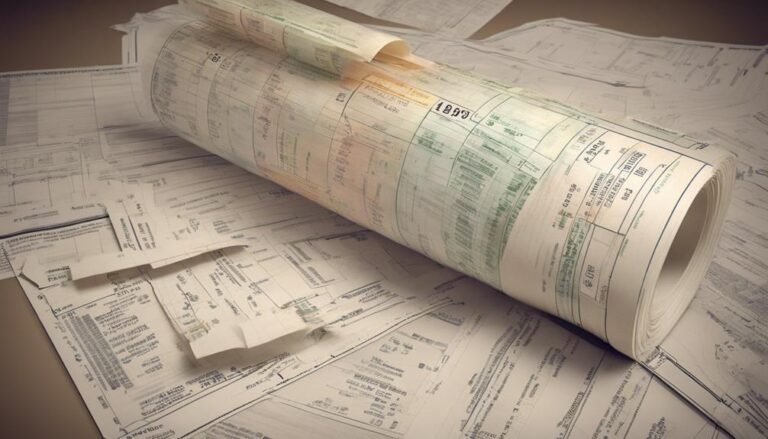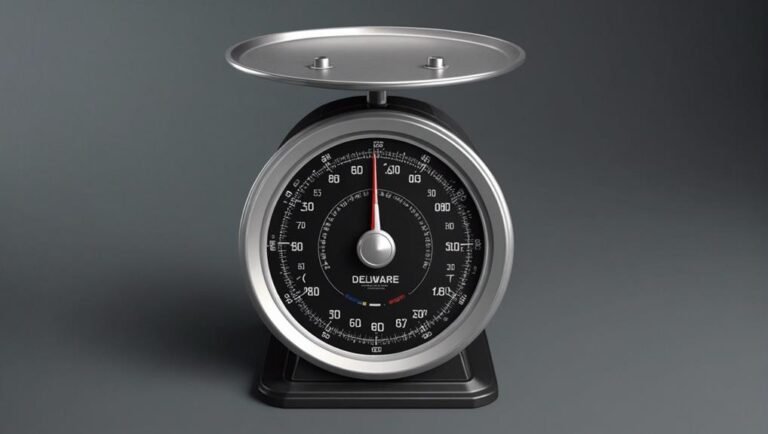Tax Form 1098: Crucial for Mortgage Deductions
Understanding tax Form 1098 is vital for maximizing your mortgage deductions. It guarantees accurate documentation of mortgage interest payments, directly impacting your potential tax savings. By adhering to the form requirements and reviewing for discrepancies, you can claim the maximum deduction. Make sure to accurately input the information into your tax return and verify personal details. This form is essential for claiming deductions on mortgage interest and simplifies the verification process if necessary. Explore other 1098 tax forms and concepts to further optimize your deductions and savings. Familiarizing yourself with these forms is key to maximizing your tax benefits.
Key Takeaways
- Form 1098 is vital for maximizing tax deductions on mortgage interest payments.
- Ensure accurate documentation to support tax savings claims.
- Review for discrepancies to claim the maximum deduction allowed.
- Accurately input Form 1098 details into tax return for deductions.
- Familiarize with other 1098 forms to optimize deductions and tax savings.
Importance of Form 1098
Understanding the importance of Form 1098 is vital for maximizing your tax deductions related to mortgage interest and related expenses. Form 1098 plays an essential role in ensuring accurate documentation of your mortgage interest payments, which directly impacts your potential tax savings.
By carefully reviewing and confirming the information on Form 1098 for accuracy, you can confidently claim your mortgage interest deduction on your tax return. The documentation accuracy provided by Form 1098 is paramount in supporting your claim for tax savings derived from your mortgage interest payments.
Hence, paying close attention to the details presented on Form 1098 is key to optimizing your tax deductions and reducing your overall tax liability.
Receiving and Understanding Form 1098
When you receive Form 1098 from your mortgage lender, make sure that the information provided accurately reflects your mortgage interest and related expenses.
Understanding the requirements for this form is essential. Common mistakes include overlooking deductible points, not verifying personal information accuracy, or failing to include all relevant mortgage interest.
To guarantee you can claim the maximum deduction, carefully review Form 1098 for any discrepancies. Remember that this form is vital for accurately reporting your mortgage interest on your tax return.
Rules for Deducting Mortgage Interest
To deduct mortgage interest accurately, make sure that the paid interest is on a qualified property and falls within the limits set by the IRS. Qualified properties include first and second mortgages, home equity loans, and refinanced mortgages. Mortgage interest deductions are subject to limitations based on the mortgage debt amount.
It's important to adhere to these debt limitations to make sure your deductions are valid. Remember that Form 1098 is necessary for deducting mortgage interest on each qualified mortgage.
Ensuring that your mortgage interest payments meet the criteria set for qualifying properties and debt limitations will help you maximize your deductions while staying compliant with IRS regulations.
Process of Claiming Deductions
Successfully claiming deductions for mortgage interest requires accurate input of Form 1098 information into the designated sections of your tax return. To guarantee deduction eligibility, start by verifying the personal information on Form 1098.
Enter the mortgage interest amount from Form 1098 into the appropriate boxes on your tax return. Remember, Form 1098 is essential for claiming deductions on mortgage interest.
While not mandatory to include with your tax return, having Form 1098 handy can simplify the verification process if the IRS requests documentation.
Other 1098 Tax Forms and Concepts
Exploring additional 1098 tax forms and related concepts reveals a diverse range of deductions available for various expenses.
Form 1098-C focuses on detailing donations of vehicles to charitable organizations, offering potential deductions for your generosity.
Form 1098-E is essential for reporting interest paid on qualified student loans, providing opportunities to lower taxable income.
Additionally, Form 1098-T supplies information regarding post-secondary tuition and fees, aiding in potential education-related deductions.
Lastly, Form 1098-MA caters to taxpayers who received assistance from the HFA Hardest Hit Fund, potentially offering deductions for those in need.
Familiarizing yourself with these various 1098 forms can help you maximize your deductions and optimize your tax savings, ensuring you benefit from all available opportunities.
Conclusion
To sum up, understanding and utilizing Tax Form 1098 is like having a key to access significant tax savings as a homeowner. By accurately reporting mortgage interest and related expenses, you can reduce your taxable income and lower your overall tax liability.
Stay informed about the rules and procedures for deducting mortgage interest to guarantee you're maximizing your financial well-being. Keep exploring other 1098 tax forms and concepts to optimize your tax deductions like a skilled financial strategist.







